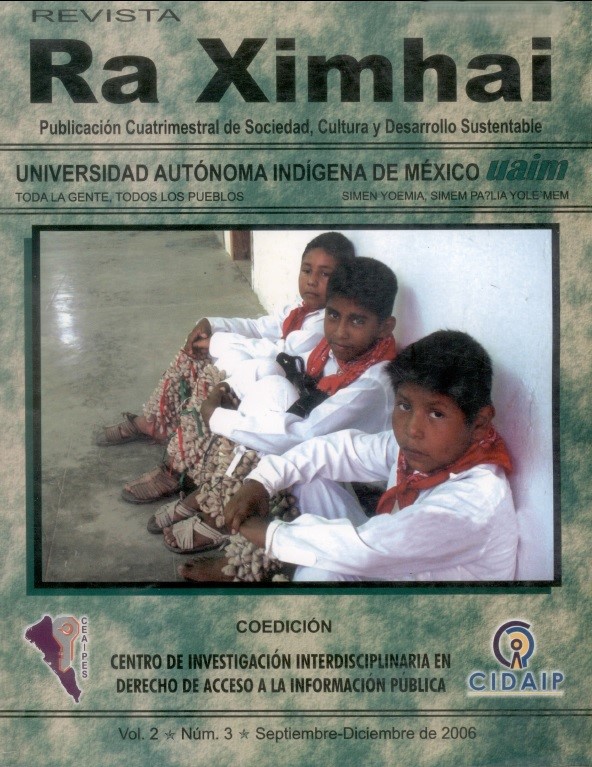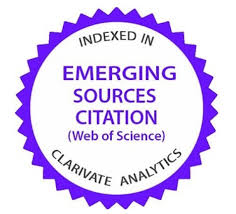Importance of Eucalyptus forest plantations
DOI:
https://doi.org/10.35197/rx.02.03.2006.13.rrKeywords:
silviculture, plantations, eucalyptusAbstract
World wood consumption is divided between energy needs, firewood and charcoal (more than 50%), sawn wood, poles, supports and construction (20%) and wood used in the pulp and paper industry (27%). World forecasts for wood consumption in the year 2000 exceed 4 billion m3, which represents a deficit of 1 billion. There is a deficit of both wood and energy in the world, which makes forest production a priority objective. The Eucalyptus genus has been and is one of the most industrially used forest resources in the world. Originating in Australia, they are extremely diverse, with more than 600 different species. Its wood is suitable for a wide variety of uses: domestic consumption, high-calorie firewood, charcoal production, building structures, communication poles, parquet floors, cellulose pulp, mine supports, slope support, or for the production of fibreboard. Its cellulose can be used to manufacture many everyday products: sanitary ware, nappies and hygiene products; derivatives such as cellophane or wallpaper glue; Formica and other laminates, special papers, filters, electronic papers; as well as the production of textile fibres such as rayon. Demand for products derived from eucalyptus wood continues to be the one showing the greatest sustained growth at an international level.
Downloads
References
Atehortúa L. 1999. Biodiversidad y Desarrollo. En: Memorias del V Congreso Mundial de Zero Emissiones. Manizlaes, Oct 11-17.
Baucher M.; Monties B.; Van, M. M.; Boerjan W. 1998. Biosynthesis and genetic engineering of lignin. Critical Reviews Plant Science 17: 125-197.
Bigneli, C. M.; Dunlop E. 1998. Volatile leaf oils of some South-western and Southern Australian species of the genus Eucalyptus (Series 1). Part XIX. Flavour and Fragrance Journal 13(2): 131-139.
Binkley C. S. 2000. “Forestry in the Next Millennium: Challenges and Opportunities for the USDA Forest Service,” forthcoming in A Vision for the Forest Service. Resources for the Future. Washington, D.C. 54 p.
Biofor, 2002. Sustainable Forestry, Wood Products & Biotechnology. www.neiker.net/biofor/pat1-1.htm
Boyle, J. R.; Lundkvist, H.; Smith, C. T. 2001. Ecological considerations for potentially sustainable plantation forests. Proc 1st International Symposium on Ecological and Societal Apects of Transgenic Plantations, Oregon State University, 151-157 p.
Briones, M. J.; Ineson, I. P. 1996. Decomposition of Eucalyptus leaves in litter mixtures. Soil Biol. Biochem., 28:1381-1388.
Chen, C. F.; Horng, F. W.; Chang, T. Y. 1996. Study on the Growth of Three Eucalyptus Species in Eastern Taiwan. Taiwan J. For. Sci., 11 (3):233-238.
Clarke, M. F.; Schedvin, N. 1999. Removal of bell miners Manorina melanophys from Eucalyptus forest and its effect on avian diversity, psyllids and tree health. Biological Conservation 88 (1): 111-120.
CONAFOR. 2001. Inventario Nacional Forestal. PRODEPLAN.110 p.
Dye, P. J. 1996. Response of E. grandis to soil water deficit. Tree Physiology 16, 233- 238.
FAO. 1993. Montes: estadísticas ahora para mañana. Roma, Italia. 52 p.
Gill, A. M.; Williams, J. E. 1996. Fire regimes and biodiversity: the effects of fragmantation of southeastern Australian eucalypt forests by urbanisation, agriculture and pine plantation. Forest Ecology and Management, 85: 261-278
Guerinot, M. L.; Salt, D. E. 2001. Fortified foods and phytoremediation. Two sides of the same coin. Plant Physiology 125:164-167.
Hancock, J. F.; Hokanson, K. E. 2001. Invasiveness of transgenic vs. exotic plant species: how useful is the analogy? Proc 1st Int’l Symp on Ecological & Societal Apects of Transgenic Plantations. Oregon State University, 187-192.
Hofstede, R.; Mena, P. 2000. Los beneficios escondidos del páramo. Servicios ecológicos e impacto humano II Conferencia Electrónica sobre Usos Sostenibles y Conservación del Ecosistema Páramo en los Andes. Mayo - Junio, 2000.
Jalota, R. K.; Sangha, K. 2000. Comparative ecological-economic analysis of growth performance of exotic Eucalyptus tereticornis and indigenous Dalbergia sisso in mono-culture plantations. Ecological Economics, 33, 487-495.
Jalota, R. K.; Sangha, K.; Kohli, R. K. 2000. Under-storey vegetation of Forest Plantations in N-W India - An Ecological Economic Assessment. Journal of Tropical Medicinal Plants, (1) 2: 115-124.
Kellison, R. C. 1999. Forestry trends in the new millenium. In: Procedings 26th Annual Tree Improvement Conference, Athens, Georgia, USA, 5 pp.
Kellison, R. C. 2002. Forestry trends in transition. In: Procedings of Symposium on Technical, Social and Economical Issues of Eucalyptus, University of Vigo, Pontevedra, Spain, 6 pp.
Klooster, D. 2000. Institucional choice, community, and struggle: a case study of Forest co-management in Mexico. World Deve. 65 p.
Laclau, J. P.; Manichon, H.; Nzila, J. D.; Bouillet, J. P. 1998. The dynamics of nutrients in a plantation of Eucalyptus in the Congo. Actes du Xviéme congrès mondial des Sciences du Sol (20-26 Août 1998) A.F.E.S. eds contribution 416- Poster
León, S. T.; Suárez, C. A.; Castañeda, T. A. 1996. Efectos sobre el suelo de plantaciones comerciales de Pinus patula y Eucalyptus grandis en crecimiento. Informe preliminar del componente Suelo y Aguas del Proyecto de evaluación del Impacto Ambiental de las Plantaciones Forestales en Colombia. Santafé de Bogotá: CONIF. 51 pp.
Lima, W. P. 1996. Impacto ambiental del Eucalipto. Sao Paulo: Editora da Universidad de Sao Paulo. 302 pp.
Lindenmayer, D. B.; Cunningham, R.B. 2000. Cavity sizes and types in Australian eucalypts from wet and dry forest types: A simple of rule of thumb for estimating size and number of cavities. Forest Ecology and Management.137 (1-3): 139-150.
Lindenmayer, D. B.; Margules, C. R.; Botkin, D. B. 2000. Indicators of biodiversity for ecologically sustainable forest management. Conservation Biology 14: 941-950.
Madeira, M.; Azevedo, A.; Soares, P. 1998. Effects of site preparation on soil properties and growth in an Eucalyptus globulus plantation. Actes du XViéme congrès mondial des Sciences du Sol (20-26 Août 1998) A.F.E.S. eds contribution 1890 – Poster.
Merino, P. L.; Gérez, P.; Madrid, S. 2000. "Políticas, Instituciones Comunitarias y Uso de los Recursos Comunes en México". En: Sociedad Derecho y Medio Ambiente. Primer informe del programa de investigación sobre aplicación y cumplimiento de la legislación ambiental en México. CONACYT, UNAM, SEMARNAP. 72 p.
Moreira, A.; Malavolta, E.; Goncalves, J. L.; Lucca, E. F. 1998. Effect of vegetable cover and soil depth on the phosphorus in maximum adsorption capacity in a typic hapludox. Actes du XViéme congrès mondial des Sciences du Sol (20-26 Aout 1998) A.F.E.S. eds contribution 1567 – Poster.
Myers, B. J.; Theiveyanathan, S.; Obrien, N. D.; Bond, W. J. 1996. Growth and water use of Eucalyptus grandis and Pinus radiata plantations irrigated with effluent. Tree Physiology, 16:211-219.
Nzila J. D.; Bouillet J. P.; Hamel O. 1998. Effets de la litière et du travail du sol sur la fertilité des sols sableux sous Eucalyptus de replantation au Congo. Actes du XViéme congrès mondial des Sciences du Sol (20-26 Août 1998) A.F.E.S. eds contribution 34- Oral presentation.
PIAF (Programa de Investigaciones de Impactos Ambientales de Plantaciones Forestales). 1998. Evaluación del impacto ambiental de las plantaciones forestales industriales. Componente de suelo y agua. (Informe final, Fase II). Santafé de Bogotá: CONIF. 76 pp.
Plomion, C. 2001. Wood formation in trees. Plant Physiology 127:1513-1523. Podwojewski, P.; Poulenard, J. 2000. Los suelos de los páramos del Ecuador. En: Mena,
P.A., Josse, C. y Medina, G. (eds). Los suelos del páramo. Serie páramo 5. GTP/Abya Yala, Quito. pp 5 – 26.
Rhoades, C.; Binkley, D. 1996. Factors influencing decline in soil pH in Hawaiin
Eucalyptus and Albizia plantations. Forest Ecology and Management, 80:47-56.
Richardson, D. M. 1998. Forestry trees as invasive species. Conservation Biology 12: 18-26.
Rihani, M.; Villemin, G.; Watteau, F. ; Ghanbaja, J. ; Toutain, F. 1998. Biodégradation des litières foliaires d'Eucalyptus: Etude morphologique, analytique et microbiologique. Actes du XViéme congrès mondial des Sciences du Sol (20-26 Aout 1998) A.F.E.S. eds contribution 1800- Poster.
Sedjo, R. A. 2001. The role of forest plantations in the world's future timber supply.
Forestry Chronicles 77:221-225.
Sedjo, R. A. 1999. “Potential of High-Yield Plantation Forestry for Meeting Timber Needs. New Forests, vol. 17: 1-3.
SEMARNAP. 1996. Programa Forestal y de Suelos 1995-2000. México D.F. pp. 21-39 SEMARNAT. 2001. La gestión ambiental en México. México. 374 pp.
SEMARNAT/CONAFOR. 2001. Programa Nacional Forestal 2001-2006. 118 pp.
Spangenberg, A.; Grimm, U.; Sepada, D. J. R.; Fölster, H. 1996. Nutrient store and export rates of Eucalyptus urograndis plantations in eastern Amazonia (Jari). Forest Ecology and Management, 80 : 225-234.
Strauss, S. H.; Campbell, M. M.; Pryor, S. N.; Coventry, P.; Burley, J. 2001. Plantation certification & genetic engineering: FSC's ban on research is counterproductive. Journal of Forestry 99: 4-7.
Sutton, W. R. J. 1999. Does the World need planted forests? New Zealand J. Forest. 44: 24-29.
White, A.; Martin, A. 2002. Who owns the world´s forests?. Forest tenure and public forests in transition. Forest Trends. 30 pp. .
White, A. A.; Molnar, M. A. 2002. To Johannesburg and Beyond: Strategic Options to Advance the Conservation of Natural Forests. Forest Trends. 28 pp.
Downloads
Published
How to Cite
Issue
Section
License
Copyright (c) 2006 Rosa Martínez Ruiz , Hilda S. Azpíroz Rivero, José Luís Rodríguez De la O, Víctor M. Cetina Alcalá, M. A. Gutiérrez Espinoza

This work is licensed under a Creative Commons Attribution-NonCommercial 4.0 International License.
Usted es libre de:
- Compartir — copiar y redistribuir el material en cualquier medio o formato
- Adaptar — remezclar, transformar y construir a partir del material
- La licenciante no puede revocar estas libertades en tanto usted siga los términos de la licencia
Bajo los siguientes términos:
- Atribución — Usted debe dar crédito de manera adecuada , brindar un enlace a la licencia, e indicar si se han realizado cambios . Puede hacerlo en cualquier forma razonable, pero no de forma tal que sugiera que usted o su uso tienen el apoyo de la licenciante.
- NoComercial — Usted no puede hacer uso del material con propósitos comerciales .
- No hay restricciones adicionales — No puede aplicar términos legales ni medidas tecnológicas que restrinjan legalmente a otras a hacer cualquier uso permitido por la licencia.








